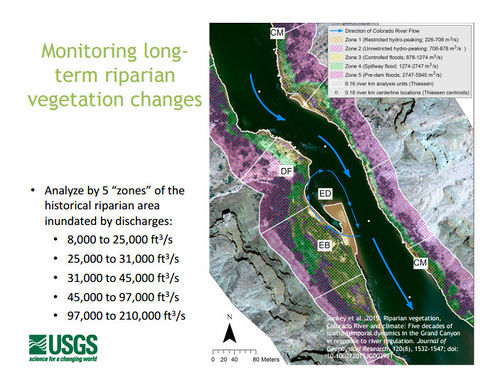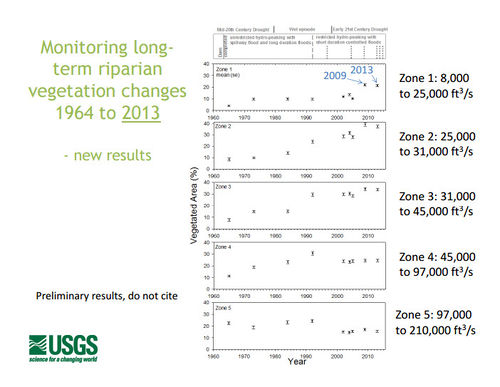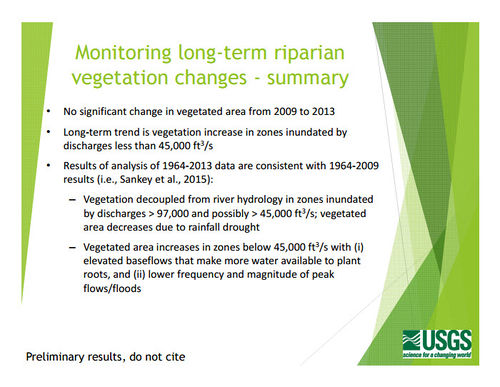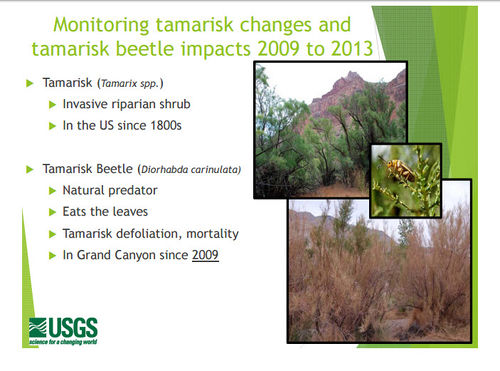|
|
Riparian Vegetation
Maintain native vegetation and wildlife habitat, in various stages of maturity, such that they are diverse, healthy, productive, self-sustaining, and ecologically appropriate.
Nonfish Biotic Communities:
Native non-fish aquatic biota and their habitats are sustainably maintained with ecologically appropriate distributions.
• Populations of native non-fish species (invertebrates and vertebrates, including Northern Leopard Frog).
- AMP support, actions and funding are limited to incorporation of dam operations which are conducive to restoration of extirpated species.
• Minimize the abundance and distribution of non-native species in the CRE.
• Sustainable dam-influenced aquatic, wetland, and springs plant communities and associated biological processes, including those supporting threatened and endangered species and their habitats.
CRE Riparian Domain:
Native riparian systems, in various stages of maturity, are diverse, healthy, productive, self-sustaining, and ecologically appropriate.
• Native, self-sustaining riverine wetlands, and riparian vegetation and habitat, with appropriate mixture of age classes.
• Healthy, self-sustaining populations of native riparian fauna (both resident and migratory).
• Habitat for sensitive species within the CRE
• Encourage the resolution of the taxonomic status of the Kanab ambersnail (e.g., completely describe the taxa and subspecies).
• Habitat for neotropical migratory birds, waterfowl, and other appropriate native bird species.
• Ecological functions of tributary mouths and riverside springs, including habitat for native species.
|



